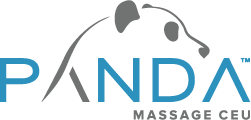3 Sports Massage Techniques You Didn’t Know You Knew
- March 7, 2018
- Posted by: massageceu
- Category: Blog

Getting a massage is one of the most relaxing, therapeutic ways you can spend your money. Research indicates that many people feel the same way. The massage therapy industry grew to $12.1 billion in 2015 in the United States and shows signs of continued growth.
For the average person, getting a massage is just relaxing and healthful. For athletes, however, sports massage is a crucial aspect of operating at their highest level of performance. The level of importance athletes place on massage leads to a dire need for continuing education for sports massage therapists. The sports massage therapy courses they take will prepare them to understand exactly what needs to be done for specific common sports ailments. Here are three different massage techniques used in sports massage therapy.
Frictions
This is a deep tissue massaging technique that involves a high force rotational point like the massage therapist’s thumb, or an object of similar size. Some theorists suggest that this form of massage could aid recovery times for sports-related tendonitis. Before jumping right into this intense form of massage, though, it helps to lay some groundwork.
Petrissage
Also known as kneading, this technique is a less intense but still firm form of massage that aims to stretch and ease tension in the muscles. It is one of the more commonly used techniques in general and sports massage sessions.
Effleurage
This can be thought of as the ‘warm-up’ technique. Before you start a day of training as an athlete, it is important to do some cautious movements to get your blood flowing and your muscles prepared for the more intense activity to come. Likewise, effleurage involves calm and tender touching movements to stimulate circulation and warmth in the muscles that are receiving treatment.
Massage is a growing industry, one that has an extremely well organized continuing education system where courses for massage therapists are necessary to perform professionally. Athletes are some of the people that rely most heavily on massage. It can ease pain and tension, and possibly have a healing effect on certain sports-related injuries. This is why continuing education courses are of the utmost importance.
